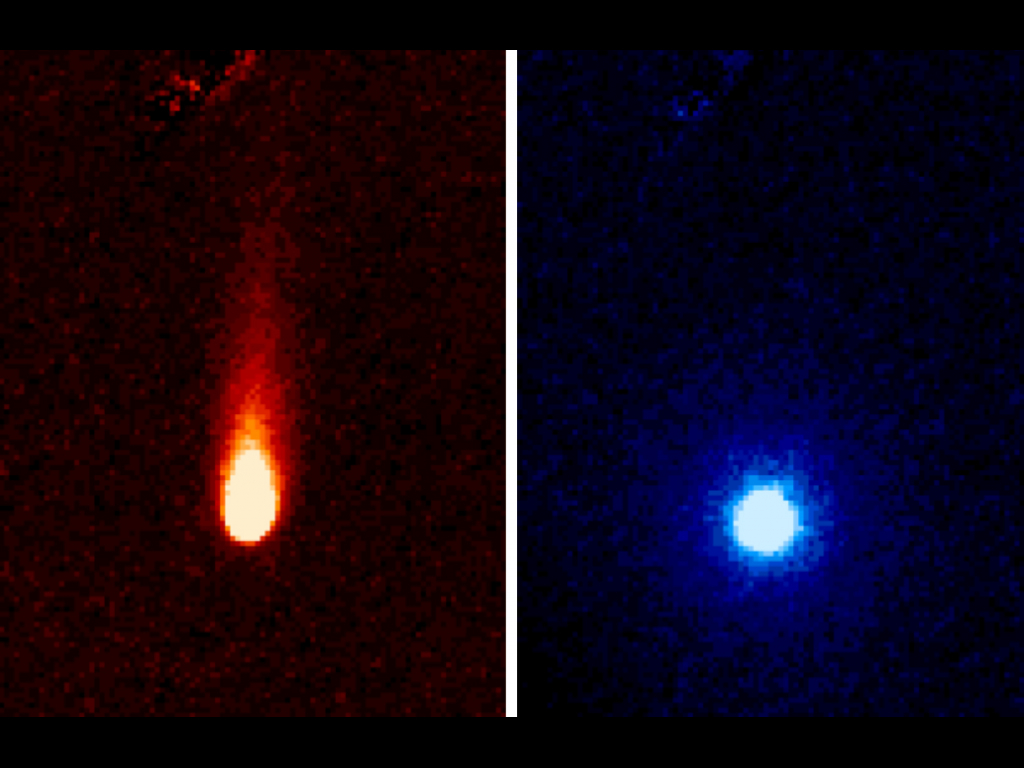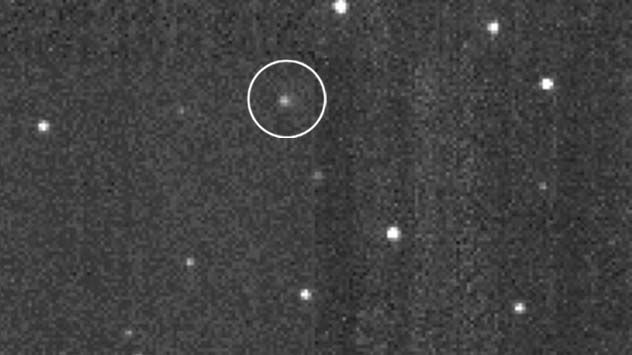Photos of Comet ISON: A Potentially Great Comet
Comet ISON Viewed From Mount Lemmon SkyCenter
Adam Block took this image of comet ISON using a SBIG STX16803 CCD Camera with a 32-inch Schulman Telescope Schulman Telescope atop Mount Lemmon from the University of Arizona’s SkyCenter on the morning of Oct. 8. [Read the Full Story Behind this Photo Here]
Comet ISON Photographed by Adam Block
Adam Block of the Mt. Lemmon SkyCenter (University of Arizona), sent in another image of Comet Ison, taken Nov. 8, 2013. He writes in an e-mail message to SPACE.com: "This is exactly one month after the previous picture I captured. It is now significantly brighter (unfortunately not yet visible to unaided eyeballs). However, it is also moving much more quickly so that capturing it at this image scale is a bit tricky. Very soon it will head into the glare of the sun. Hopefully we can monitor it via images from space-based solar telescopes as it rounds the sun at the end of the month."
A Unique Hubble View of Comet ISON
In this Hubble Space Telescope composite image taken in April 2013, the sun-approaching Comet ISON floats against a seemingly infinite backdrop of numerous galaxies and a handful of foreground stars. The icy visitor, with its long gossamer tail, appears to be swimming like a tadpole through a deep pond of celestial wonders. In this composite image, background stars and galaxies were separately photographed in red and yellow-green light. Because the comet moved between exposures relative to the background objects, its appearance was blurred. The blurred comet photo was replaced with a single, black-and-white exposure. The images were taken with the Wide Field Camera 3 on April 30, 2013.
Comet ISON on Oct. 11
Clifford Spohn captured this image of comet ISON using a QHY9 mono CCD/TEC 140 F7 Refractor on Oct. 11 from of Marion, Ohio while his good friend astrophotographer Terry Hancock calibrated, stacked in CCDStack and post processed the shot in CS5.
Comet ISON on Sept. 15, 2013
UK astronomer Pete Lawrence took this image of Comet ISON in the early hours of Sept. 15, 2013, using a Vixen FL-102S 10 cm APO telescope and a Starlight Express SXV-H9 CCD camera. The camera was exposed for a total time of 40 minutes, comprising 10 x 120 s exposures and 4 x 300 s exposures, with the images stacked together to produce the final result. The streaks in the background are star trails, the apparent motion of stars in the night sky due to the rotation of Earth. North is in the direction of a line drawn from the comet's head towards the upper-left corner of the image.
Comet ISON Photos by Spitzer Space Telescope
These images from NASA's Spitzer Space Telescope of Comet ISON were taken on June 13, 2013, when ISON was 312 million miles (502 million kilometers) from the sun. The lefthand image shows a tail of fine rocky dust issuing from the comet, blown back by the pressure of sunlight. The image at right shows a neutral gas atmosphere surrounding ISON, likely created by carbon dioxide fizzing off the comet at a rate of 2.2 million pounds per day. []
Hubble Photo of Comet ISON, Stars and Galaxies
The sun-approaching Comet ISON floats against a seemingly infinite backdrop of numerous galaxies and a handful of foreground stars in this Hubble Space Telescope composite image, taken in April 2013. []
Breaking space news, the latest updates on rocket launches, skywatching events and more!
Comet ISON Photo by Hubble Space Telescope
This NASA Hubble Space Telescope image of Comet ISON was taken on April 10, 2013, when the comet was slightly closer than Jupiter's orbit at a distance of 386 million miles from the sun (394 million miles from Earth). [Full Story]
Hubble Photo of Comet ISON
This contrast-enhanced, computer-processed image was produced from photos of Comet ISON taken by NASA's Hubble Space Telescope on April 10, 2013, when the comet was 386 million miles from the sun. [Full Story]
Comet C/2012 S1 (ISON)
The comet that may put on a spectacular light show during a November date with the Sun, was observed by the Deep Impact mission. The spacecraft has also had close fly-bys of comet's Tempel 1 and Hartley 2 and scientific observations of Garradd. [Read the full story]

Space.com is the premier source of space exploration, innovation and astronomy news, chronicling (and celebrating) humanity's ongoing expansion across the final frontier. Originally founded in 1999, Space.com is, and always has been, the passion of writers and editors who are space fans and also trained journalists. Our current news team consists of Editor-in-Chief Tariq Malik; Editor Hanneke Weitering, Senior Space Writer Mike Wall; Senior Writer Meghan Bartels; Senior Writer Chelsea Gohd, Senior Writer Tereza Pultarova and Staff Writer Alexander Cox, focusing on e-commerce. Senior Producer Steve Spaleta oversees our space videos, with Diana Whitcroft as our Social Media Editor.










